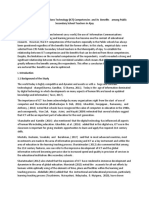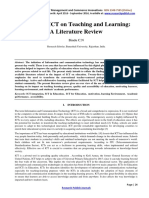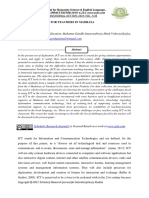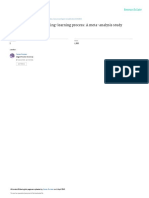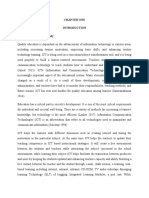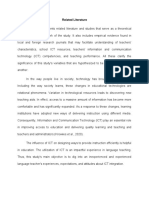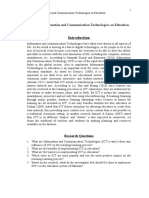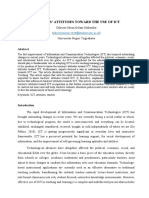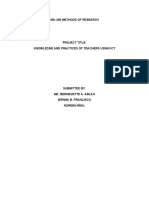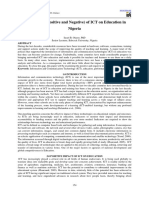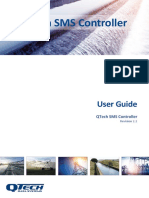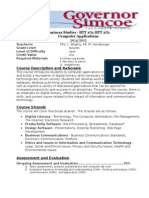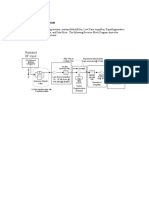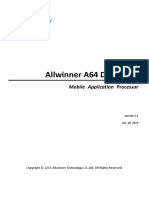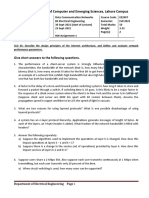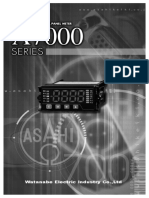0% found this document useful (0 votes)
187 views5 pagesArticle
The document reviews literature on the effects of information and communication technology (ICT) on teaching and learning. It finds that ICT has significantly impacted education by making it more accessible and engaging. ICT allows for active, collaborative, learner-centered approaches and helps develop 21st century skills. However, many teachers and students lack the technological skills to effectively integrate ICT. While ICT provides opportunities, its impact depends on access to infrastructure and resources. The review examines how ICT influences learning environments, motivation, and academic performance.
Uploaded by
Jashlyn MirandaCopyright
© © All Rights Reserved
We take content rights seriously. If you suspect this is your content, claim it here.
Available Formats
Download as PDF, TXT or read online on Scribd
0% found this document useful (0 votes)
187 views5 pagesArticle
The document reviews literature on the effects of information and communication technology (ICT) on teaching and learning. It finds that ICT has significantly impacted education by making it more accessible and engaging. ICT allows for active, collaborative, learner-centered approaches and helps develop 21st century skills. However, many teachers and students lack the technological skills to effectively integrate ICT. While ICT provides opportunities, its impact depends on access to infrastructure and resources. The review examines how ICT influences learning environments, motivation, and academic performance.
Uploaded by
Jashlyn MirandaCopyright
© © All Rights Reserved
We take content rights seriously. If you suspect this is your content, claim it here.
Available Formats
Download as PDF, TXT or read online on Scribd
/ 5

